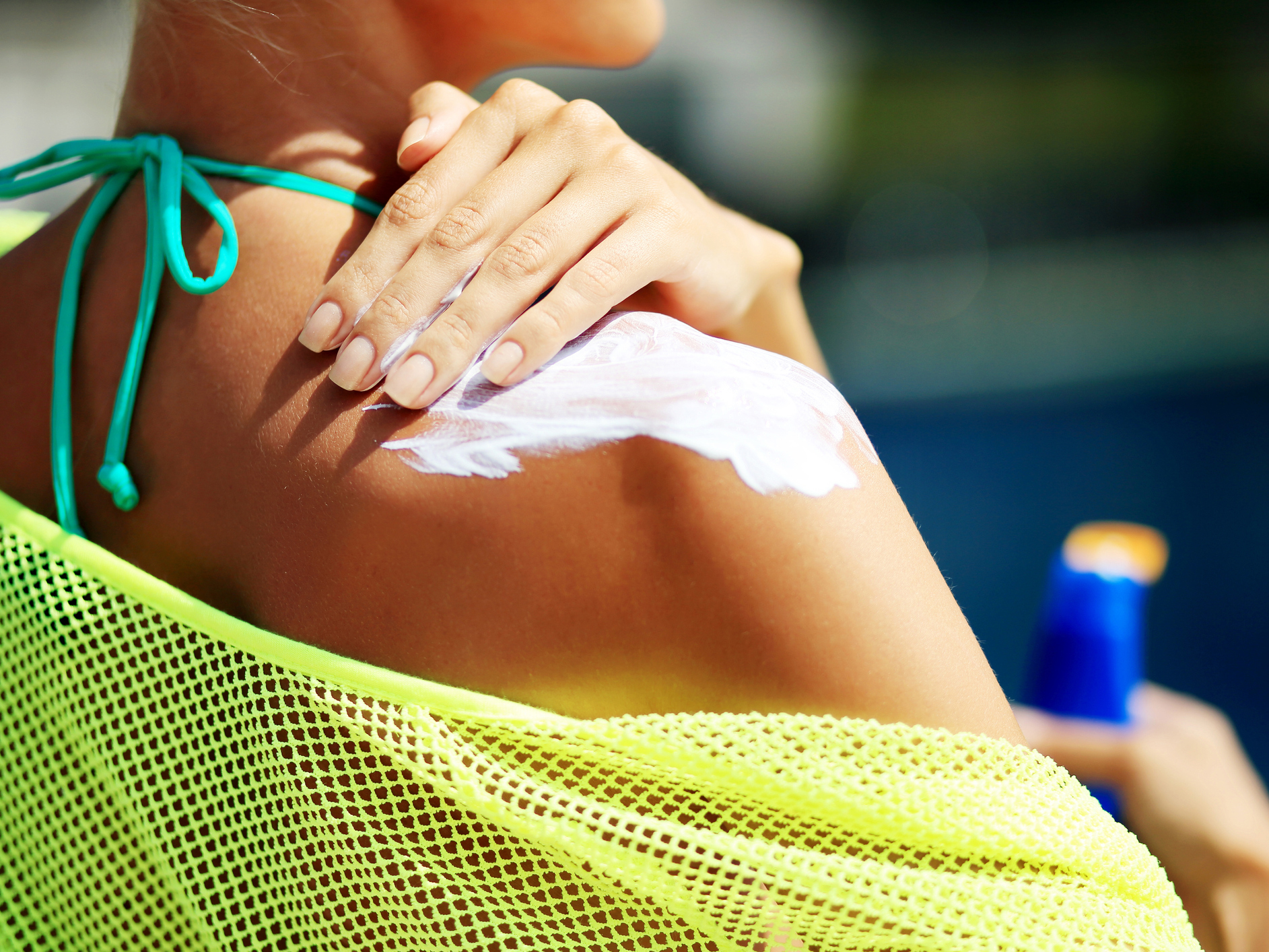Get Easy Health Digest™ in your inbox and don’t miss a thing when you subscribe today. Plus, get the free bonus report, Mother Nature’s Tips, Tricks and Remedies for Cholesterol, Blood Pressure & Blood Sugar as my way of saying welcome to the community!
3 important factors for choosing sun protection against photoaging and cancer

What’s that warm sensation on my skin?
Yes, the sun is already beating down in parts of the country and that means you need to be protected from skin cancer and the unsightly damage of photoaging.
Sunscreen protection can be confusing. But you’ve come to the right place…
Store shelves are stocked with a huge array of different types, brands, protection levels and mind-boggling numbers to go with them… SPF… UVB… UVA… 15… 30… 50…
But what does it all mean?
Choosing the right sunscreen and using it correctly is simple — if you demystify all of the above.
And that’s what we’re going to do — so you can protect your skin from photoaging (premature aging due to ultraviolet radiation), and to avoid becoming a victim of the most common cancer in the United States…
More than 5 million cases of skin cancer are diagnosed in the United States each year. That equals about 9500 per day.
The vast majority of skin cancer deaths are from melanoma. On average, one American dies of melanoma every hour.
But the good news is this: By the time you read to the end, you’ll only have to remember three things to keep from becoming a cancer statistic and getting a terrible sunburn…
What is SPF, anyway?
Most people think that SPF stands for “sun protection factor,” when actually it stands for “sunburn protection factor.”
The FDA developed the SPF system in the 1960s. It is a measure of how long a product can delay reddening of the skin due to sun exposure.
For example, if normal skin would start to redden after ten minutes, a product that could lengthen that time to 150 minutes was assigned an SPF of 15.
How much SPF do I need?
A common misconception about sunscreen is that, for example, a sunscreen with an SPF of 30 is twice as effective as one with an SPF of 15.
In reality, an SPF 15 sunscreen blocks 93 percent of UVB rays, while an SPF 30 product blocks 97 percent. At SPF 50, you only add one percent more protection (98 percent).
According to the Environmental Working Group, you never need an SPF above 50. Instead, it’s more effective to use a lower SPF and apply it more often.
UVA vs. UVB rays
You’re exposed to UVA rays any time you go out in daylight, even on a cloudy day. UVA is also what’s used in tanning beds because these are the rays that darken skin.
UVA rays may not give you a sunburn, but because they penetrate deeply into your skin’s layers, they will age your skin and contribute to basal cell carcinoma and squamous cell carcinoma, two types of skin cancer less deadly than melanoma.
UVB rays are the ones that cause that beet-red sunburn you get at the beach when you’re not careful… the kind that can lead to melanoma years later. You have the most chance of being exposed to UVB rays between 10 a.m. and 4 p.m.
One very important thing to note about SPF levels is that they only indicate the amount of protection you get from UVB rays — the sunburn rays — not UVA.
To ensure protection from both UVB and UVA, look for the words “broad spectrum.”
According to dermatologist and researcher, Dr. Roopal Kundu, at Northwestern University Feinberg School of Medicine, those are the two most critical words to look for on your sunscreen label.
Sunscreen ingredients to avoid
All sunscreens are not created equal. Here are a few things you should avoid:
Oxybenzone. An active ingredient in about half of commercial sunscreens, oxybenzone is a known hormone disruptor. Unfortunately, it’s been detected in the blood of nearly every American.
Retinyl palmitate. This is a form of Vitamin A that could encourage the growth of skin tumors and lesions, defeating the protective purpose of using sunscreen.
Both of the above ingredients have been shown to have estrogen-mimicking effects on the body — meaning they can contribute to a hormone imbalance in both men and women.
Whether you slather them on or spray them on (watch out for noxious fumes), they find their way into your body.
Related: The best all-natural sunscreen
What’s more, they have been shown to be terrible for the marine environment. They leach nutrients from coral and makes life difficult for fish, sea urchins, and algae. For these reasons, Hawaii has banned sunscreens with these chemicals from its beaches.
If you want to avoid chemicals altogether, consider a sunblock like zinc oxide.
A sunblock offers physical protection by blocking the sun’s rays, instead of chemical protection that filters the rays. Sunblock would also need to be reapplied as needed.
The takeaway?
- Choose an SPF below 50 and reapply often
- Look for “Broad Spectrum” on the label for protection from UVA and UVB
- Go chemical-free if you can and choose zinc oxide
Editor’s note: Discover how to live a cancer prevention lifestyle — using foods, vitamins, minerals and herbs — as well as little-known therapies allowed in other countries but denied to you by American mainstream medicine. Click here to discover Surviving Cancer! A Comprehensive Guide to Understanding the Causes, Treatments and Big Business Behind Medicine’s Most Frightening Diagnosis!
Sources:
- Hawaii Is Banning Sunscreens. Here’s Why — MindBodyGreen
- Estrogenic activity and reproductive effects of the UV-filter oxybenzone (2-hydroxy-4-methoxyphenyl-methanone) in fish — Aquatic Toxicology
- SUNSCREEN 101: Find The One That Fits Your Needs — Environmental Working Group
- Skin cancer — American Academy of Dermatology
- This Is the Only Sunscreen Article You Need to Read — Time












